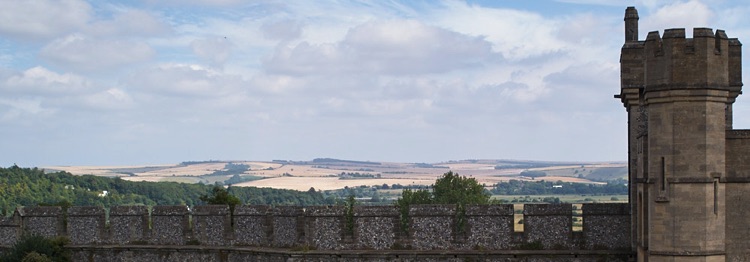1155
Year
The Confederation of Cinque Ports
Event
Origin of the Cinque Ports
Shipping was the primary means of transport and warfare through much of British history. Fleets of Ships were maintained by the kings and major earls and used for raiding, expansion of their territories and infighting between each other. The ships were frequently provided by the coastal ports of britain. During the reign of Henry II, Henry recognized the need for a reliable fleet and in a charter of 1155 granted rights to the “Confederation of Cinque Ports” in exchange for the service of supplying ships and crews. The term "Cinque Ports" comes from cinque, the French word for five - there were originally five cinque ports.
Charter of Liberties
The cinque ports were granted certain liberties through royal charter. The earliest known charter dates from 1155. The ports were allowed a level of self government, including permission to hold courts and enforce punishment, up to and including execution. They were exempt from royal tax and tolls and allowed to raise their own revenue through tolls, possession of lost goods unclaimed for a year, or thrown overboard.
Terms of Service
A 1293 Memorandum of Service, provides an example of the cinque ports obligations to the king. In this memorandum, Hastings and its member ports were required to find twenty one ships, with each ship crewed by twenty one strong, fit and well armed men. This obligation was to be met within forty days of the Kings summons.
The ships and men remained in the Kings service for fifteen days. The men received no payment for this service. The King could retain the men in his service longer, but was required to pay them for service beyond the fifteen days. A ships master receive 6d per day, a constable 6d per day, and other crew 3d per day
Organization and Membership
Five ports on the Kent and Sussex coast were recognized as the chief cinque ports. These were Dover, Romney, Hythe, and Sandwich in Kent and Hastings in Sussex. Later the Rye and Winchelsea in Sussex were added with the designation of “Ancient Town”. The cinque ports were governed by a Lord Warden, who was often based in Dover.
These chief towns had member towns, sometimes known as “limbs” helped the chief towns meet their commitments to the king. For example, in Sussex, Hastings was a chief port, supported by Winchelsea, Rye, the lathe of Pevensey, and Bulverhythe, all in Sussex and by Bekesbourne and Grange in Kent. Tenterden in Kent was a limb of Winchelsea.
Zenith
In 1152, with his marriage to Eleanor of Aquitaine, Henry II had forged the huge anglo-french territory known as the Angevin empire. This territory included England, part of Ireland and Brittany, Anjou, Gascony and Normandy in France. On Henry’s death, his son Richard I had the forceful leadership and military skill to hold the empire together, but after Richard’s death in 1199, the empire quickly fell apart under King John’s weak leadership. Separate again, rivalry and conflict between England and France increased, ultimately culminating in the 100 years war. This was a period of coastal raiding, invasions and warfare between England and France requiring frequent service from the cinque ports.
Decline
By Tudor times specialized warships were being developed and in 1495 Henry VII commissioned a dry dock in Portsmouth for this purpose of building warships. After this, demand for the service provided by the cinque ports declined. The changing Kent and Sussex coast also meant that many of the original cinque port harbors silted up and were no longer able to provide ships. Successive legislation in the English parliament stripped the liberties and privileges enjoyed by the cinque ports. The title of Lord Warden of the Cinque Ports still exists, but this is largely a ceremonial post and the defense of British waters is in the hands of the Royal Navy.

Sussex Timeline


